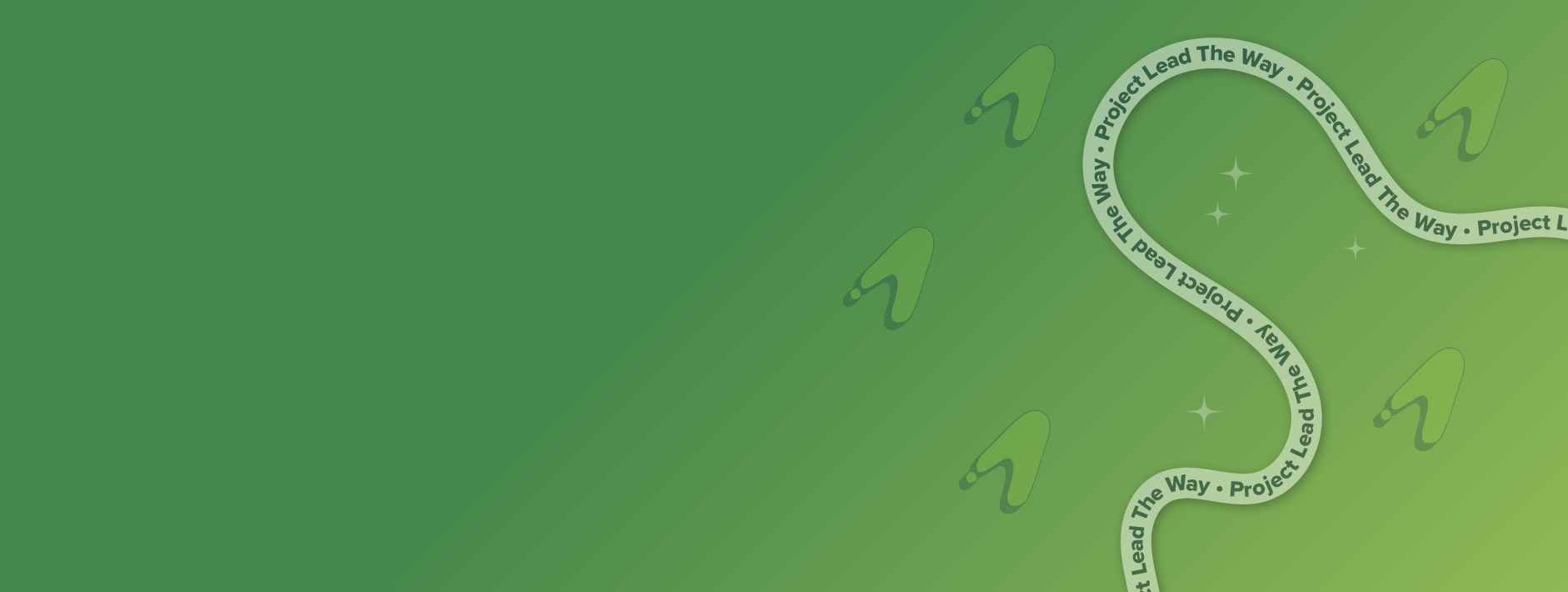PLTW Launch Students Learn Through Exploration and Discovery
Young learners are naturally wired for discovery. PLTW Launch is designed with activities that let them see what they can be and build skills to discover what they can do.
Students are immersed in hands-on activities, projects, and problems that build upon each other and relate to the real world. They experience integrated learning that blends computer science, engineering, biomedical science, and more. Throughout the modules, even the youngest learners apply their math and English Language Arts (ELA) skills, learn science to standards, and adopt skills that are foundational across disciplines.
Additionally, to support rigorous learning for all students, including America’s 5 million English Language Learners, all PLTW Launch students and teachers have access to curriculum in both English and Spanish.
PLTW Launch is designed to support a wide range of implementations. Whether the modules are offered in all classrooms, as a specials rotation, as grade level rotations, as an after-school program, or even as a summer learning implementation, PLTW Launch offers the flexibility to meet your needs.
Pre-Kindergarten
-
Students explore characteristics of living and nonliving things. By examining habitats, students develop an understanding of what living things need to survive. They use the design process to sketch, build, and test an animal’s shelter, then reflect on their design.
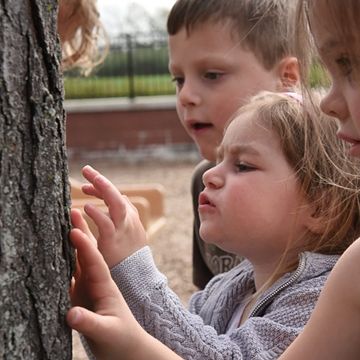
-
Students develop an understanding of matter by examining solids and liquids through hands-on activities. They explore floating and sinking as they predict and observe what effect liquids have on different materials. Using the design process, students rely on their skills and knowledge of matter to sketch, build, test, and reflect on a design they have created that will float on water and keep items within the design dry.
-
Students develop an understanding of healthy habits and learn how food affects growth, gross motor skills (muscles), the heart, teeth, and eyes. They discover career connections as they learn about wellness checkups at the pediatrician, dentist, and optometrist. Students investigate how germs are spread and explore healthy habits to prevent the spread of germs. Using the knowledge and skills they’ve gained from the activities and project; students create a multimedia product to share what they’ve learned with others.
-
Students develop spatial sense as they engage in activities that explore directional movement – over, under, through, and around. They begin to develop coding skills as they plan a path, create wearable code, and code an interactive robotic device. Using the engineering design process, students create code that will lead them to the location of a hidden item.
Kindergarten
-
Students discover the design process and how engineers influence their lives. They explore the elements of structure and function by identifying products around them designed by engineers and asking questions engineers might ask. They are introduced to a design problem through a story in which Angelina wants to design a paintbrush. Students apply their knowledge from the module to design their own paintbrushes.
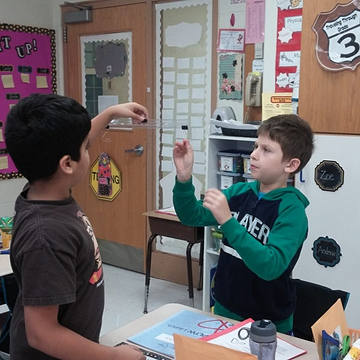
-
Students investigate pushes and pulls on the motion of an object and develop knowledge and skills related to forces of differing strengths and directions. Their explorations include pushes and pulls found in their everyday world, such as pushing a friend on a swing or pulling a wagon. In this module’s design problem, Suzi needs to move rocks from her yard so she can install a swing set. Students work through the problem by applying what they learn about forces.
-
Students explore the relationship between structure and function in the human body. They examine major organs within the body and investigate how the structure of each is related to its function. Students are introduced to the design problem through a story in which Angelina falls off the monkey bars and breaks her arm. Students learn about the diagnosis and treatment of her injury and then work to design and build a cast for Angelina.
-
Students explore the nature of computers and the ways humans control and use technology. Starting with an unplugged activity, students learn about the sequential nature of computer programs. Students are inspired by a story in which Angelina, Mylo, and Suzi make videos to teach preschoolers about animals in their habitats. Then, students work in small groups to design and program a simple digital animation about an animal in its habitat.
-
Students learn about the Sun’s warming effect on Earth. They investigate how the Sun affects different Earth materials, which leads to how the Sun affects our weather. Students learn how to describe the weather to make observations and collect data. They use this data to describe patterns over time, which helps predict the weather. They view a local weather forecast to understand how the weather impacts their daily lives. Students practice how to dress for the day by dressing Angelina, Mylo, or Suzi based on a forecast. Then, they use the design process to design a structure that can reduce the Sun’s warming effect.
-
Students investigate the needs of living things. During an outdoor walk, students look for plants and animals and consider how their needs are met in their natural environment. Then, they explore how living things impact the natural environment. They participate in a simulation to observe how an animal impacts the natural environment to meet its needs. Students then explore human needs and wants and how humans impact the natural environment, both positively and negatively. In an exercise to reduce waste, students use the design process to build a new game or toy out of reusable materials.
First Grade
-
Students investigate the properties of light and sound, including vibration from sound waves and the effect of different materials on the path of a beam of light. After students develop an understanding of light and sound, they are challenged to solve a design problem Mylo, Suzi, and Angelina face. In the story, the characters are lost and must use only the materials in their backpack to communicate over a distance by using light and/or sound. Students use the design process to sketch, build, test, and reflect on a device that solves this design problem.
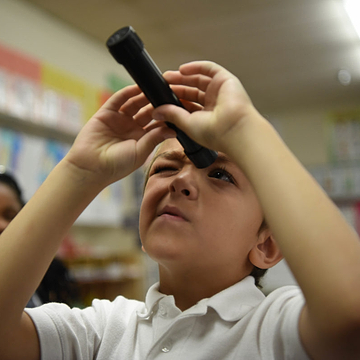
-
After observing the sun, moon, and stars, students identify and describe patterns in their recorded data. Angelina, Mylo, and Suzi introduce the design problem, which challenges students to create a playground structure designed to protect students from ultraviolet radiation. Students utilize their knowledge of light to design, build, and test structures created to solve this problem. Students then evaluate their designs, share their findings, and explore ideas to improve their structures based on the testing data.
-
Students explore animal adaptations for protection, camouflage, food obtainment, and locomotion. Students learn what it means for an organism to be adapted to its environment and how different adaptations can be categorized. Students are introduced to the design challenge when Suzi announces she is visiting the Sahara and needs to get prepared for her trip. Students are challenged to design the ideal shoe for travelers to wear in extreme environments, applying what they have learned and looking to plant and animal adaptations to guide their designs.
-
In this module, students explore the sequential nature of computer programs through hands-on activities, both with and without a digital device. They explore the basic fundamentals of programming using ScratchJr, a block-based programming language to create their own projects. The Use-Modify-Create framework strengthens programming skills as students use a practice program, modify the program, and then create their own program according to the constraints provided.
Applying skills and knowledge learned from the activities and project in this module, students work together to design and program a digital animated story to share with members of their community.
-
Students investigate how offspring are like their parents. They model animals’ patterns of behavior which help them survive. They learn how plants and animals have external parts that help them meet their needs. With this understanding, students follow the design process to build a model of an outdoor shelter that is inspired by plant and animal external parts.
Second Grade
-
In this module, students investigate and classify different kinds of materials by their observable properties, including color and texture, and heat conduction. Students learn about states of matter and properties of materials. They investigate which materials are good insulators and which are good conductors. After building their knowledge and skills throughout the module, students determine the best materials to use as they design a prototype to keep an ice pop frozen for at least 30 minutes.
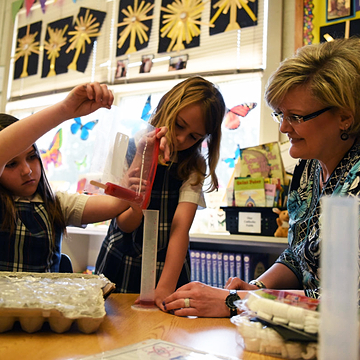
-
Students research the variety of ways animals disperse seeds and pollinate plants. They expand their understanding of properties of matter as they consider the form and function involved in seed dispersal and pollination. Students are introduced to the design problem when Angelina, Mylo, and Suzi are tasked with starting a wildflower garden on an expansive plot outside of their school. To solve the design problem, students apply their knowledge and skills to design, build, test, and reflect on a device that mimics a way in which animals disperse seeds or pollinate plants.
-
Students explore how the surface of the Earth is always changing. They are introduced to different types of maps and explore how these maps convey different information about the world in which we live, including where water is found on Earth. Angelina, Mylo, and Suzi introduce the design problem when faced with the challenge of helping a community threatened by a potential landslide. Students investigate the different forces that shape the surface of the Earth and design solutions to limit the impact of erosion on this fictional community, which is located at the bottom of a hill that was recently destabilized by a fire.
-
In this module, students explore the sequential nature of computer programs through hands-on activities, both with and without a digital device. In a life-size board game, students write a program using directional cards and repeat loops to program Rosie the Robotic Dog to move through a maze. Then, students develop an understanding of computer science, computer scientists, and the impacts of computing.
After building an understanding of computer science, students create programs using a block-based programming language. Students follow the Use-Modify-Create Framework to write programs with sequences, loops, and triggers. Applying skills and knowledge learned from the activities and project, students work together to design and program a game that can be played on a digital device.
-
Students learn about the diversity of life in habitats, or biodiversity. They observe different habitats and the living things that grow in them. They engage in three scenarios to learn the importance of having many different organisms in a habitat. Next, students investigate how much water and sunlight plants need to grow in an environment. They use the design process to design a planter garden to grow in a specific environment.
Third Grade
-
In this module, students learn about the forces involved in flight. They design, build, and test an experimental model glider to find out how air and other forces affect its flight. Students discover aeronautics alongside Angelina, Mylo, and Suzi and are inspired by the characters’ desire to use their skills to help those in need. Students apply the design process to the problem of delivering aid to an area where supplies must be airlifted in and dropped to the ground from an aircraft.
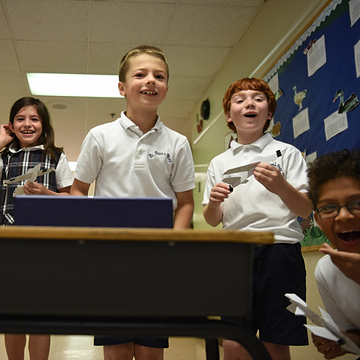
-
Students explore simple machines such as wheel and axles, levers, the inclined plane, and more. They investigate the effects of balanced and unbalanced forces on the motion of an object. Angelina, Mylo, and Suzi go on a field trip to the zoo and are faced with the design problem of how to rescue a trapped tiger. Students then apply their knowledge of forces and devise a way to rescue a heavy zoo animal while keeping it safe throughout the process.
-
A litter of puppies intrigues Angelina, Mylo, and Suzi. The characters wonder how the puppies' traits help them in their environment. Students investigate the differences between genetic traits that are inherited and traits that are influenced by the environment. Students learn about dominant and recessive alleles, as they explore the phenomenon that offspring may express different traits than parents. Using the design process, students design the offspring of two fictional parent animals that are able to survive in a specific environment. They use data to support the inherited traits passed from the parents to the offspring.
-
Students explore control structures such as events, loops, and conditionals. These structures specify the sequence in which instructions are executed within a program. Starting with computer-free activities and progressing to programming in a block-based language on a device, students learn how to think computationally about a program. In the design problem, Angelina, Mylo, and Suzi are challenged to use computer programming to write a story with different endings. Combining their writing and programming skills, students develop interactive stories on a device with multiple plots.
-
Students explore, collect, and classify data related to three factors that affect weather: precipitation, temperature, and wind. They contrast weather and climate, using the three factors in their descriptions. Students explore different types of weather hazards, including those in their region. They design a solution that reduces the impact of a weather-related hazard.
-
Students are introduced to life cycles. Students compare and contrast different animal life cycles to identify common features and specific differences. Students deepen their understanding of life cycles as they investigate the life cycle of honeybees. They learn that worker bees have an important relationship with flowering plants that connects their life cycles. They investigate whether living in a group makes honeybees more or less susceptible to hazards. Then, students design a bee habitat that promotes the survival of bees. They create a public service campaign to share their designs to raise awareness of the importance of bees.
-
Students learn about Earth’s habitats and how these habitats support life. Students examine fossils and investigate what fossils reveal about how organisms and habitats adapt and change over time. Students identify factors that cause environmental changes and simulate the effect that changes have on living things. Then, they take a deeper look at specific examples of environmental changes in their own habitat. Students use the design process to explore one problem caused by environmental change and develop an action plan to reduce or stop future damage.
Fourth Grade
-
In this exploration of how computers work, students are encouraged to make analogies between the parts of the human body and parts that make up a computer. Students investigate reaction time as a measure of nervous system function. After Mylo suffers a concussion, his friends become interested in how to diagnose concussions and create a reaction-time computer program to assess a baseline before a concussion occurs. Students apply what they have learned to build their own reaction-time measurement devices on tablets. This module has strong connections to the fourth grade Human Brain module.
-
Students discover how signals passing from cell to cell allow us to receive stimuli from the outside world, transmit this information to the brain for processing, and then send out a signal to generate a response. When Mylo experiences a concussion after falling off a skateboard while not wearing a helmet, he and his friends are motivated to raise awareness about concussions. Inspired by this design problem, students work as part of a team to design, plan, and create a video or podcast to educate children on identifying and preventing concussions.
-
Students observe the amplitude and wavelength of waves in a simulation and describe their patterns. They learn that waves move energy from one place to another, which can cause objects to move. They learn that colors are determined by the wavelengths of light through an investigation using the primary colors of light. Then, students explore how light interacts with different materials that are transparent, translucent, and opaque. They use the design process to design a game that incorporates their knowledge and skills about light gained throughout the module.
-
Students learn the characteristics of living things and look for similarities among organisms. Students examine a wide range of organisms, exploring their unique internal and external structures to understand how these structures support the organism's survival and combine with other structures to function as part of a larger system. Students then apply the knowledge and skills they have gained as they work through the design process to research, design, and build a model prosthesis for an injured animal.
-
Students explore natural features on Earth. They learn about different landforms and bodies of water. Students take a deeper look at the origins of landforms as they learn about tectonic plates and plate boundaries. They examine how landforms have changed over time due to weathering and erosion. Students investigate how mechanical and chemical weathering impacts the Earth, and they identify examples of weathering in their local area. Students use the design process to create a documentary that explains how one of Earth’s landforms has been shaped over time.
-
Students learn about the relationship between humans and the environment. Students begin the module by activating knowledge about natural resources. They learn how to reduce the impact humans have on the environment and use the design process to create an upcycled project. Then, students investigate natural disasters, and they design emergency preparedness kits to demonstrate their understanding of the challenges that natural disasters pose. Students follow the design process to generate a plan to reduce the human impact on Earth or to lessen the impact of natural disasters on humans.
-
Students engage in explorations of energy-related phenomena. They make observations, pose questions, and make connections as they investigate energy transfers. Throughout the module, students explore connections to careers and to the necessity of energy in real-life as they visit multiple business owners through the Main Street interactive experience. To deepen their understanding of energy, students design an investigation to test what happens when marbles collide on a track. Each business owner presents a problem that needs to be solved. Students select a problem and use the design process to apply scientific ideas to design, test, and refine a device that converts energy from one form to another.
Fifth Grade
-
Students explore the ways robots are used in today’s world and their impact on society and the environment. Students learn about a variety of robotic components as they build and test mobile robots that may be controlled remotely. Angelina, Mylo, and Suzi are tasked with designing a mobile robot that can remove hazardous materials from a disaster site. Students are then challenged to design, model, and test a mobile robot that solves this design problem.
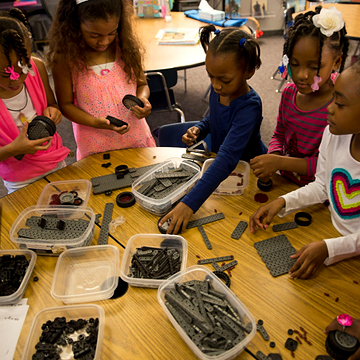
-
Students expand their understanding of robotics as they explore mechanical design and computer programming. This module focuses on developing skills needed to build and program autonomous robots. Angelina, Mylo, and Suzi are tasked with designing an automatic-guided vehicle to deliver supplies to a specific area in a hospital without being remotely controlled by a person. Inspired by this design problem, students work with a group to apply their knowledge to design, build, test, and refine a mobile robot that meets a set of design constraints.
-
Students explore transmission of infection, agents of disease, and mechanisms the body uses to stay healthy. Through a simulation, they compare communicable and non-communicable diseases. In the design problem, Suzi comes down with a fever and sore throat, and her friends wonder how this illness might have spread across the school. Students tackle the design problem by examining evidence to deduce the agent of infection, the likely source of the outbreak, and the path of transmission through a school. They design and run an experiment related to limiting the spread of germs and apply results to propose appropriate prevention methods.
-
In this module, students investigate models and simulations and discover powerful ideas about computing. The design problem – related to the Infection: Detection module – is introduced as Mylo and Angelina look to model an infectious disease to simulate how an illness spreads through their class. Applying their new understanding, students program their own models and collect data by running simulations with different parameters.
-
Students learn about the three states of matter. They investigate mixtures of different materials that lead to new substances and conserve mass. Students design a test that demonstrates that an item has the required mechanical properties.
-
Students learn about Earth’s ecosystems and how energy flows from the sun to plants, and from plants to animals. Students create a model to describe photosynthesis and explain how energy from the sun is introduced into an ecosystem. Students use evidence to defend the claim that plants get the materials they need for growth mainly from air and water. Students learn how energy flows through an ecosystem and explore a simulation about how an ecosystem can become unbalanced. Finally, students use the design process to develop an action plan to protect plants and animals in an ecosystem that has become unbalanced due to human activity.
-
Students develop an understanding that stars are balls of hot gas. They learn that our Sun is a star at the center of our planetary system. Students learn about predictable patterns on Earth in relation to its place in the solar system. They design an exhibit that educates others about a concept they have learned throughout the module.
-
Students learn about Earth’s systems: the atmosphere, hydrosphere, geosphere, and biosphere. Students examine how these systems interact and examine the role of gravity within each system. They take an in-depth look at how the processes of the water cycle intersect with each of the systems and apply this knowledge to investigate factors that impact the rate of evaporation. Students use the design process to develop a method for producing clean drinking water from samples of contaminated water.
Build a Strong Elementary STEM Program
When laying the foundation of your PLTW Launch program, keep in mind that the strongest programs typically target their energy on key student-focused priorities.
These programs provide access to elementary STEM curriculum to students at all grade levels, ensuring every student gets to experience PLTW. Most strong PLTW Launch programs have several teachers trained at each grade level that are actively engaged in the program as well as champions among district and school leaders.
Our Approach to Standards Connection is Focused on Student Outcomes and Flexibility.
Our programs are designed to empower students to thrive in an evolving world. As a part of this process, we take standards connections into account when developing and updating our curriculum.
We define connections as:
- Students complete a designated task(s) that demonstrates the outlined knowledge and/or skills of the specific standard or objective.
- Our multidisciplinary programs align to a variety of standards and provide districts and schools with the flexibility to tailor programs to meet their specific state or local requirements as needed.
PLTW Launch Pricing
The PLTW Participation Fee is invoiced annually and does not increase with added modules or program expansion. Pricing subject to change.
Annual Participation Fee
PLTW schools participate on an annual basis, with year-long, uninterrupted access to hands-on, relevant curriculum for teachers and students.
$950
Professional Development
PLTW Core Training immerses teachers in a hands-on, collaborative learning environment, challenges them to look at their classrooms in a new way, and empowers them to bring learning to life with PLTW.
$500-$700
An Evidence-based Solution for Elementary Students
With PLTW Launch you can:
- Create career confidence by exposing your students to the wealth of in-demand opportunities awaiting them.
- Inspire students to work together, solve problems, and persevere in a vibrant, dynamic environment.
- Foster interaction and social emotional learning for all students, especially underrepresented and female students.
Read PLTW Launch Evidence Paper
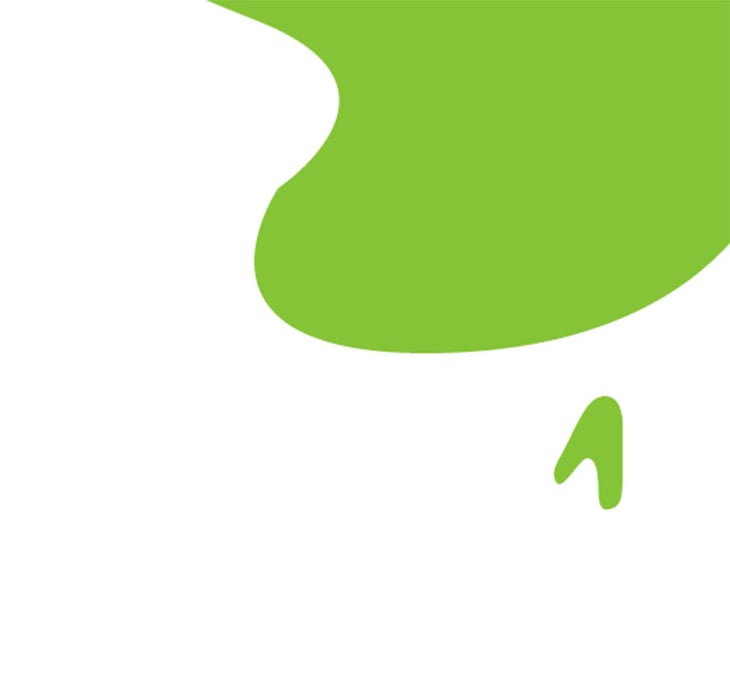
Start Transforming Your Classrooms
-
Explore Our Curriculum
See how our pathways in computer science, engineering, and biomedical science make for a comprehensive PreK-12 learning experience.
-
Plan for PLTW
Plan for a lasting, strong program with support from PLTW throughout your implementation and beyond.
-
Experience PLTW
See how thousands of PLTW students and alumni across the country are unlocking their potential and thriving in college, career, and beyond.
